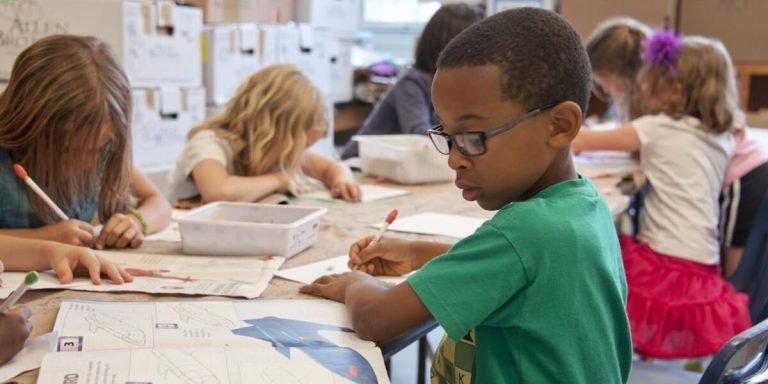Federation for Children with Special Needs: Navigating the Educational Journey
The Federation for Children with Special Needs serves as a beacon of hope and support in the journey of special education. It operates on multiple fronts, providing resources, advocating rights and spreading awareness to help parents navigate the complex landscape that is teaching children with diverse needs.
Involving yourself actively in your child’s growth journey becomes significantly nuanced when dealing with learning disabilities or unique demands outside traditional educational parameters. This blog aims to enlighten you about how this federation aids such journeys by amplifying patience, creativity while developing avenues for cognizant development tailored specifically towards special needs children.
Did you know?
Despite the challenges faced by children with special needs, studies show they can develop strong resilience traits; including empathy and perseverance. These positive qualities often make them excellent problem solvers in different aspects of life.
Understanding the Role of Federations in Special Education Support
In the landscape of special education, one cannot underscore enough the critical role played by organizations such as federations for children with special needs. These bodies function as robust pillars of support in creating an inclusive and fruitful learning ecosystem. They help bridge gaps between educators, parents, policy-makers, and children requiring specialized educational resources.
Federations operate on foundational principles of advocacy – advocating not just rights but also access to appropriate services that can enhance a child’s instructional journey tremendously. This could range from accessibility tools in Physical Education (PE) classes to tailored technological solutions aiding classroom instruction or remote learning programs.
Furthermore, technology integration has become an integral part of modern-day education strategies especially when dealing with students having unique needs.The advents like virtual reality headsets for immersive therapies or speech recognition apps facilitating communication progress are fitting illustrations here.Technology helps level the educational playing field effectively making it easier for all learners including those with physical challenges which was near impossible only a decade ago.
Exploring the Services Provided by the Federation for Children with Special Needs
The Federation for Children with Special Needs plays a significant role in offering support to children requiring special education. This body works collaboratively with families, schools, and communities to shape the future of these children.
A vital service provided by the federation is facilitating access to resources essential for meeting every child’s unique educational needs. The goal is not merely about providing learning materials; instead, it offers an extensive range of resources spanning across training programs for parents and educators, legal aid consultations regarding special education laws and regulations all while promoting inclusion.
Navigating Legal and Advocacy Resources Through Educational Federations
In the vast world of special education, understanding and utilizing available resources can often seem like a daunting task. One particular resource, Educational Federations play an essential role in supporting children with diverse abilities every day. The Federation for Children with Special Needs is one such organization that has made significant strides in this area.
The primary purpose of these federations is to equip parents, educators and students themselves with tools necessary for success – advocacy being one critical aspect among many others. When we talk about advocacy in terms of special education support, it implies strategizing ways to identify rights and needs while effectively communicating them at appropriate platforms.
Navigating the legal landscape associated with special education may feel overwhelming at first glance due to its intricacies but fear not! With countless policies protecting children’s access to learning opportunities regardless of their unique attributes or circumstances exist – there’s always help within arm’s reach!
Specifically talking about technology integration into educational processes tailored toward differently-abled individuals—federations play a key role here as well. They encourage adaptation of advanced tech-tools maximizing potential benefits derived from personalized learning solutions addressing individual requirements more accurately compared against traditional models employed so far.
Collaborative Strategies for Parents and Educators in Special Education
The Federation for Children with Special Needs is a vital bridge between parents and educators in the realm of special education. However, effective collaboration requires more than just a shared commitment; it demands strategic actions that promote inclusive practices. As we navigate through 2023, innovative technologies continue to shape how these collaborations occur and redefine the experience of children in special need schools.
One strategy rapidly gaining momentum is Technology Integration in Education wherein modern tools are embedded seamlessly into teaching methods to create engaging learning experiences while also addressing unique needs. This approach allows teachers to tailor academic content to individual learners’ strengths and challenges thus facilitating an inclusive educational environment that caters specifically for each student’s potential growth.
Parents play an indispensable role here too as they can leverage such technology-based resources at home complementing what the child learns at school thereby fostering consistency across both environments which significantly aids cognitive development alignment. The active input from both ends – parents keeping up on new educational technologies and their proper implementation by teachers ensures better resource optimization promoting students’ overall progress confidently.
Establishing Effective Communication Channels Between Stakeholders
Understanding the unique educational needs of children with disabilities is fundamental, and this necessitates efficient communication channels between all key stakeholders. This includes parents, educators, therapists, and even policy-makers involved in structuring special education programs.
Establish effective communication channels by creating a dedicated platform for special education discussions. These platforms can include online forums or community-wide meetings. Here’s how to implement them:
Create Regular Online Meetings: The advancements in technology have made virtual gatherings easier than ever before. Zoom calls or Google Meet sessions could serve as regular touchpoints among different stakeholders associated with Children’s Special Needs Education Federation.
Use Digital Platforms for Document Sharing: Tools like Dropbox or Google Drive allow easy sharing of vital documents amongst stakeholders. This way everyone involved stays updated about progress reports of each child enrolled under the federation program.
Leverage Social Media Channels: Social media spaces such as Facebook groups provide an informal yet highly useful space for interaction amongst parents and educators connected through this cause by offering advice & support during challenging times.
Feedback Loop Systems on Mobile Apps – There are plenty options available from mobile applications that facilitate instant messaging and feedback loop systems which remarkably enhance communication efficiency regarding any specific concerns or updates pertaining to the student’s learning journey.
Lastly but importantly remember always keeping empathy at heart when communicating; making sure you’re using supportive language while discussing sensitive topics around students’ capabilities will assist in fostering trust within your ‘Federation”.
Utilizing Individualized Education Programs (IEPs) to Tailor Student Learning Plans
The Individualized Education Program (IEP), a critical component of special education, offers an effective strategy for collaborative efforts between parents and educators. It operates as a dynamic blueprint tailored to the unique learning needs of each child with disabilities.
In 2023, technology integration in educational systems has become increasingly pivotal in crafting these distinct plans. One might ask how? Well, it’s through leveraging digital tools and resources that enhance accommodation strategies and foster inclusive environments which cater to varied learning styles.
To begin using IEPs effectively requires gathering comprehensive data about your child’s strengths, weaknesses and interests – areas where tech-based assessment tools can come handy! Online questionnaires such as parent surveys provide valuable insights into daily routines while game-like cognitive evaluation tests allow students’ abilities shine beyond academic confines!
Accessible Technology and Tools for Enhancing Learning Experiences
When discussing accessible technology and tools for enhancing learning experiences, we must address the transformative role of innovative tech solutions in special education, notably their impact on children with unique needs. At the forefront is a rising trend of integration featuring adaptive software customized to individual learners’ requirements. The Federation for Children with Special Needs has been instrumental in promoting this inclusivity.
Emphasis is placed on assistive educational resources that offer auditory or visual cues customizable according to learner preferences – thus providing an engaging experience designed around each child’s needs. For instance, text-to-speech converts written content into audio format enabling easier comprehension while speech-to-text translates spoken words into type-written formats thereby aiding communication further among these unique minds.
Collaborative digital spaces get accentuated where students can interact virtually mitigating physical barriers they’d typically face in traditional settings thus making lessons more inclusive. This not just helps cognitively differently-abled kids grasp concepts better but also promotes social engagement which often poses challenges due to inherent disabilities.
Technology’s integrative power lies not only within classrooms but beyond, serving as versatile support networks when appropriately harnessed by caregivers and educators alike – whether it be personalized apps tracking IEP goals or platforms connecting parents seeking advice from seasoned veterans navigating similar journeys; undoubtedly revolutionizing ‘Special Education Resources & Support’.
The Impact of Assistive Devices on Independent Learning for Students With Disabilities
As we delve deeper into the 21st century, technology continuously evolves and transforms nearly every facet of our lives. In the realm of education, particularly special needs education, advancements in technological tools have begun to play a pivotal role. The “federation for children with special needs” has been at forefront advocating accessible technology integration that promotes independent learning.
Assistive devices are products used to increase or improve functionalities for individuals with disabilities while fostering an environment conducive to independence. They cover a broad spectrum – from software programs which aid memory recall or reading comprehension; tangible equipment like ergonomic chairs and anti-fatigue mats promoting comfort during prolonged sitting/standing periods; high-tech gadgets such as eye-tracking systems enabling computer access without keyboard/mouse use.
A significant impact brought about by these assistive devices is paving the way towards equal educational opportunities across all student spectrums. These tools level out playing fields by accommodating various learners’ unique sets of abilities thereby empowering each child’s potential success irrespective their capabilities limitations.
The development also offers educators myriad avenues teach diverse topics formats satisfying distinct learning styles preferences within classrooms encouraging collaborative inclusive teaching methods be adopted simultaneously removing stigmas associated traditional one-size-fits-all pedagogy approach.
Evaluating Educational Software: Meeting Diverse Needs in Special Education
Evaluating educational software and technology is paramount in special education, especially for organizations like the federation for children with special needs. The right tools can transform learning experiences, making them accessible and engaging.
When you select technology or software for your child’s education plan, assess its compatibility with their unique requirements. Consider these factors:
1. User-Friendly Interface: Students should interact comfortably without feeling overwhelmed by complicated systems—simplicity rules! Check out sites that offer trial versions before jumping fully on board.
2. Inclusive Design: It’s crucial that the chosen tool provides access options and support suitable for students of all abilities—not excluding anyone based on physical limitations or disabilities!
5.Uniting Education Goals & Technological Properties – Ensure you are picking an option where tech specs line up well enough with set academic goals—an amalgamation guaranteed to optimize every learner’s potential.
6.Online Support Availability – Remember sustainability matters too thus ensuring round-the-clock technical assistance is important—we don’t want pauses disrupting valuable learning hours now do we?
Conclusion
In conclusion, weathering the educational journey for children with special needs can be a daunting task. However, organizations like the Federation for Children with Special Needs have your back every step of the way. They are committed to empowering parents and educators alike by providing exceptional resources designed to enhance this extraordinary adventure.
Don’t let uncertainty shadow you on this path – remember, knowledge is power! Feel free to explore our website further where we offer an array of additional articles and publications discussing all aspects of childhood education. You’ll find support in understanding different learning styles or gain access to insights into evolving teaching methodologies that equip both parents and educators alike.
After all, it’s not just about illuminating paths; it’s also about nurturing limitless potential within each child!







